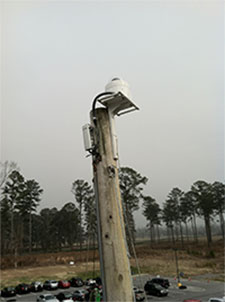
The American Symbol Comes Under Video Surveillance
 Berry College in Rome, GA has welcomed some new faces on campus - a pair of bald eagles. The college first caught a glimpse of the birds back in March 2012, as they built a nest in a pine tree not far from the main entrance. Although bald eagles had been spotted in the vicinity of the campus for the past few years, this ranked as the first, documented nest in the modern history of Floyd County, where Berry College is located. Photographers from across the state showed up in droves to capture the activity, but it turned out the eagles nested too late in the season to produce offspring and, by April, had moved on.
Berry College in Rome, GA has welcomed some new faces on campus - a pair of bald eagles. The college first caught a glimpse of the birds back in March 2012, as they built a nest in a pine tree not far from the main entrance. Although bald eagles had been spotted in the vicinity of the campus for the past few years, this ranked as the first, documented nest in the modern history of Floyd County, where Berry College is located. Photographers from across the state showed up in droves to capture the activity, but it turned out the eagles nested too late in the season to produce offspring and, by April, had moved on.
The feathered friends headed home to their nest again this past fall, however, and mated. During that time the Berry College Telecom / Security team installed a surveillance system to view the eagles following the Department of Natural Resources (DNR) and the U.S. Fish & Wildlife Service guidelines.
The system was made possible through the generosity of Fluidmesh, which donated the equipment needed. An outdoor PTZ camera has been mounted on top of an emergency call station 500 feet away from the nest and another 400 feet away from a building in the opposite direction. Berry College selected Fluidmesh to partner with them on this project to donate the radios needed for the system.
The system is up and running and live video streams of the eagles' nest can be viewed at: http://www.berry.edu/eaglecam/
As of January 23rd, approximately 30,000 unique visitors - some from as far away as Japan and Europe - have "tuned in" hoping to see the eagles on their nest.
Fluidmesh will be recognized later this year by the DNR for their participation in this important, ecological effort.
As for the happy couple, it looks like love will keep them together. Once paired, bald eagles remain together until one dies. The bald eagle became the National emblem in 1782 when the great seal of the United States was adopted.
Photos courtesy of Eddie Elsberry, Director of Sustainability, Berry College
